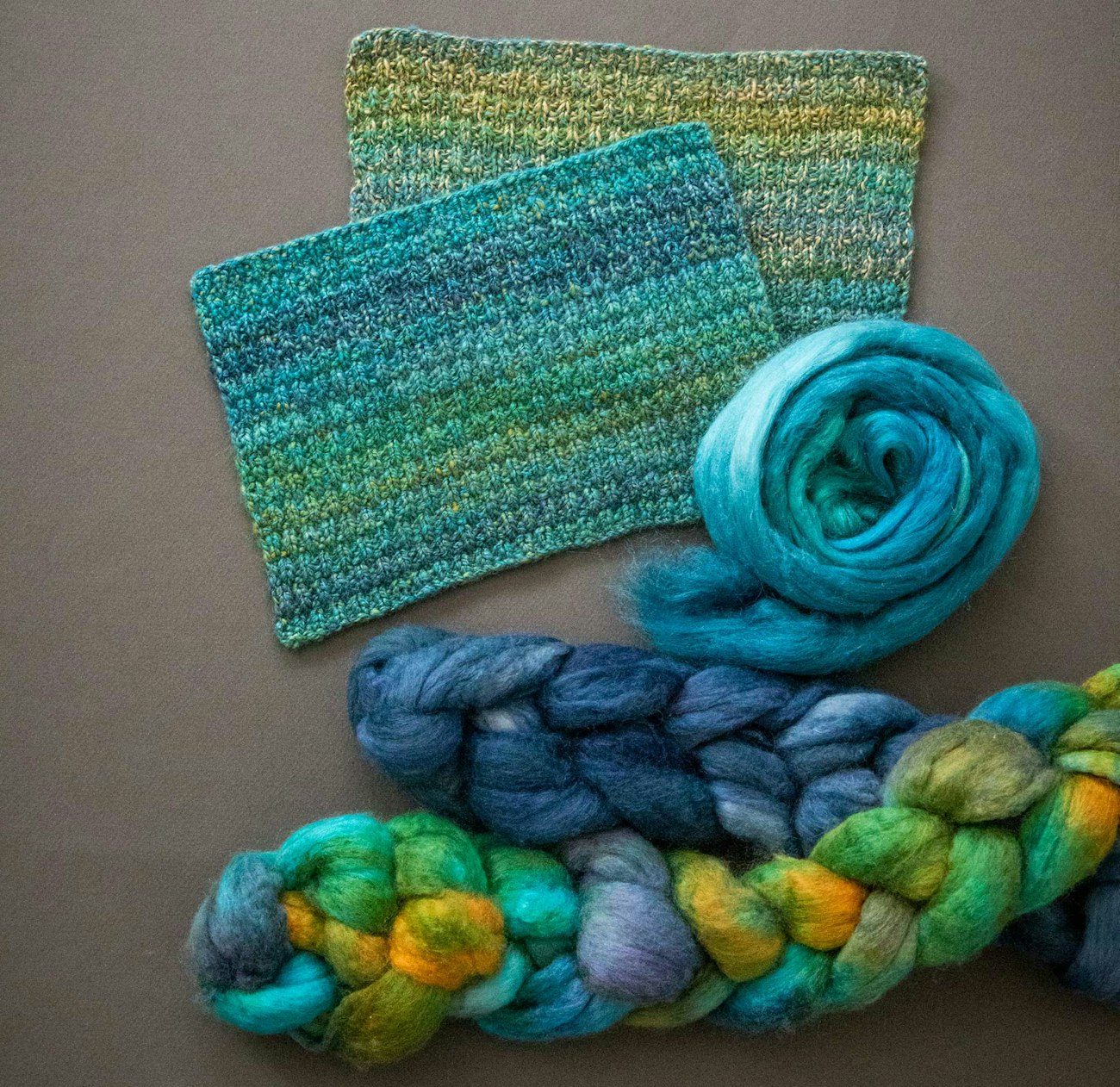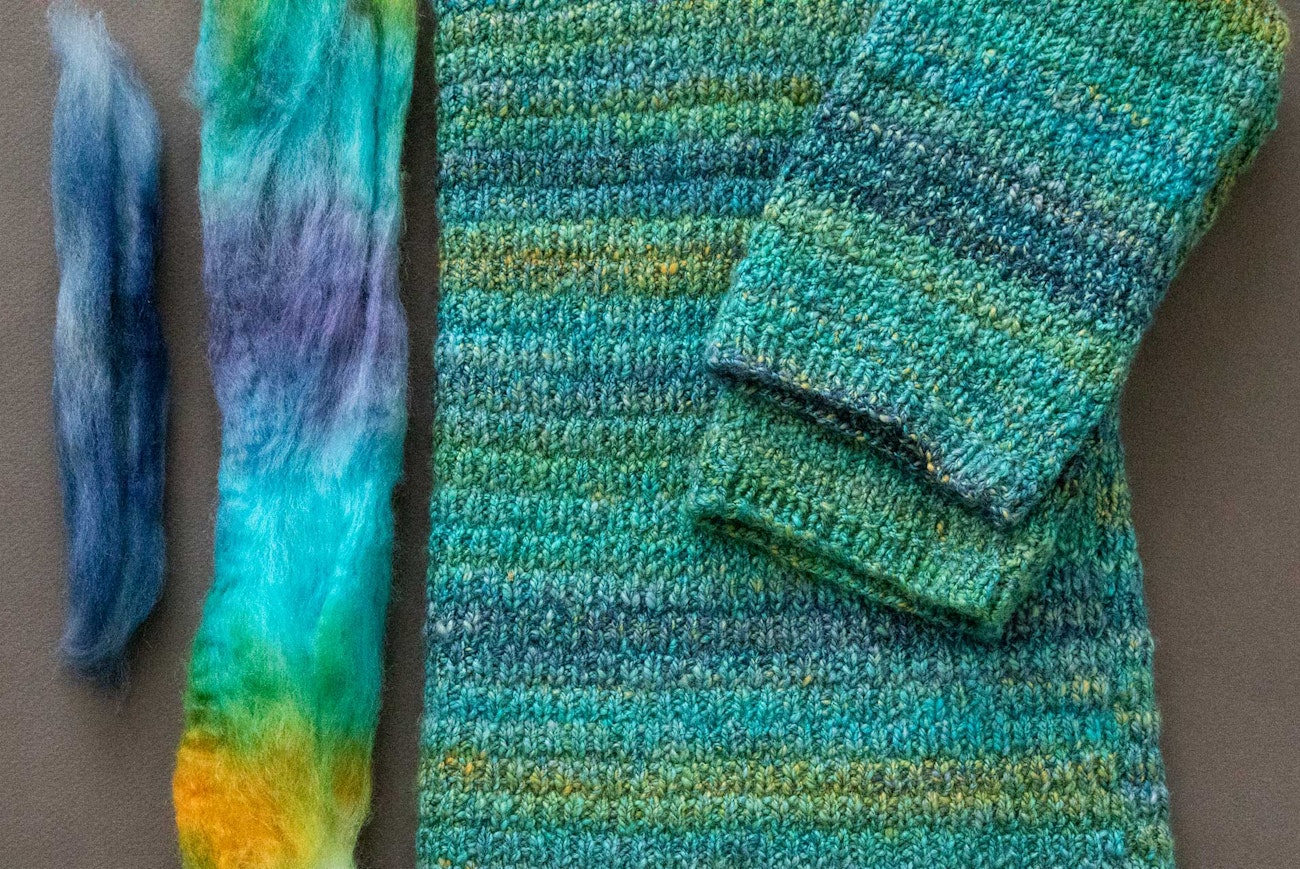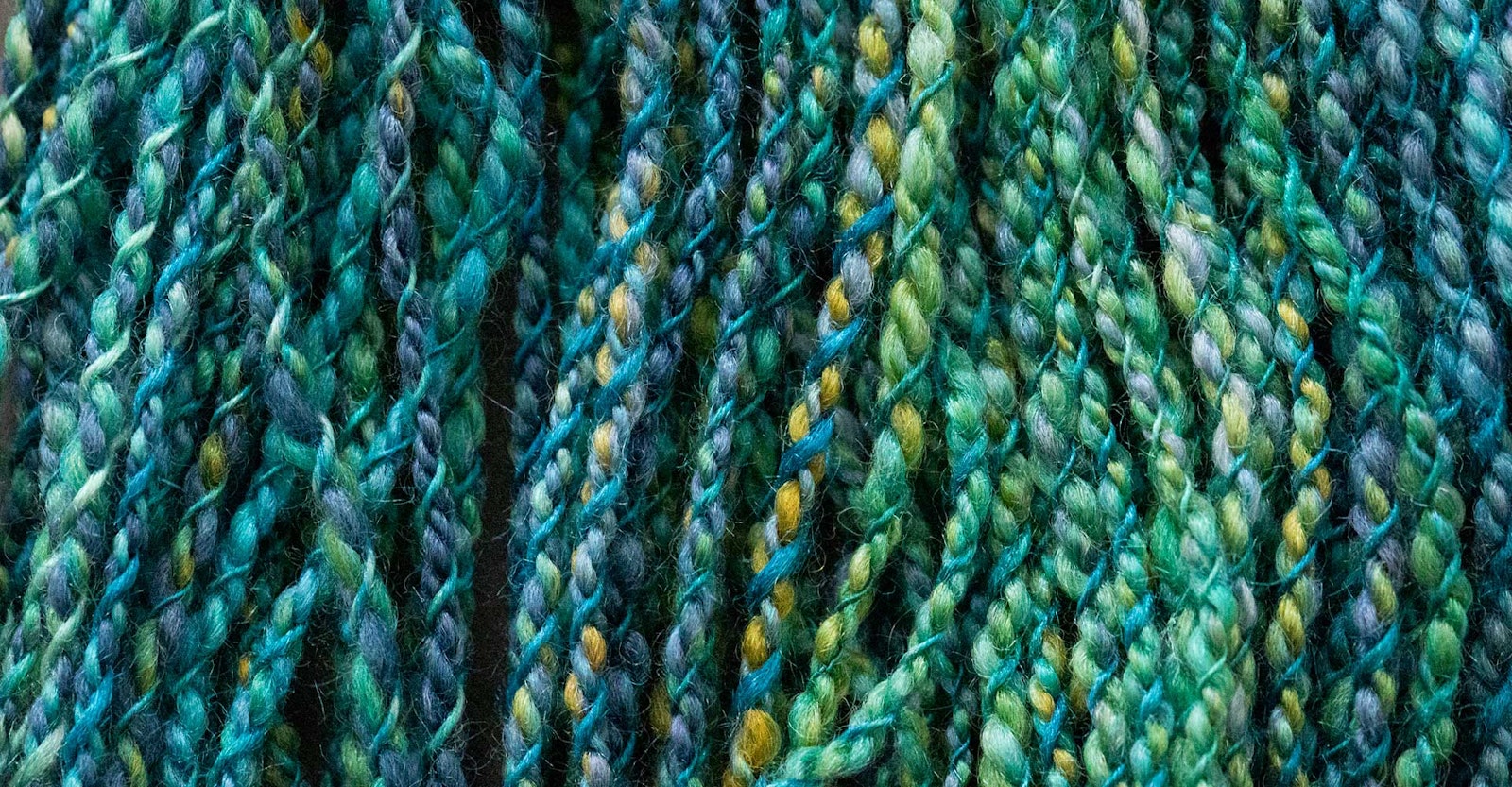Handpainted combed tops with colors that flow from one to the next can be so beautiful that they seem like finished creative works all on their own. Braids often spend time hanging in my studio or curled happily in baskets where I can enjoy them long before spinning. Oh, the maker’s life!
There are many ways we can spin these combed tops to create yarns that echo the color progressions created by the dyer. Chain-plying and fractal spinning are both great choices for spinning intentionally self-striping yarns. Recently, I wanted to create a self-striping yarn that combined the dapples and overall consistency of marled yarns with the clear stripes we get when spinning singles or chain-plying. I started exploring a crêpe construction, and after a few test samples, this recipe quickly became one of my favorites. I was ready to put it into action with a large project—the Bari Tee.
Construction
“Crêpe” can refer to many different things in the textile world, but here, I’m using it as described in The Spinner’s Book of Yarn Designs. As a three-ply yarn, it is composed of two Z-spun singles that are plied with S-twist as usual. Then a third singles—S-spun this time—is plied with the two-ply. This means that the third ply rests on the surface of the two-ply, making it more visible and pronounced. It’s a fabulous place for a bit of silk or precious fiber.
 Kate set out to create yarns that echo the color progressions in these delicious braids.
Kate set out to create yarns that echo the color progressions in these delicious braids.
Color
I chose the crêpe construction because I wanted to mix three elements: a striping singles, a nonstriping singles that mixes colors throughout, and a singles of something different in color and texture to spice things up. The striping singles is spun straight from the combed top. Splitting the fiber into strips will create shorter stripe sequences, so you can adjust for your fiber and project.
The nonstriping singles is created with a marl technique. First, split the combed top into strips. When you are ready to spin, select at least two strips and orient them so different colors are in the drafting zone together. The more colors that will be mixed into the singles, the more blended and consistent the marl effect.
For the third singles—the wild card—I like to use a different fiber and sometimes a different color. In exploring this soft-stripe recipe, I’ve been surprised by how different the color can be and still create a unifying effect that doesn’t interrupt the stripes. Unbleached tussah is one of my favorite fibers to explore for this third element (see the top swatch above). Have fun and sample!
 The striping effect in the finished Bari Tee echos the patterning in the braids.
The striping effect in the finished Bari Tee echos the patterning in the braids.
A Striped Bari Tee
Sarah Solomon’s sweater design (find the pattern on page 52 of Spin Off Summer 2024) is perfect for playing with stripes. It is knitted bottom-up in four pieces—front, back, and two sleeves—and Sarah envisioned this as a transitional season piece with great drape. There’s no shaping in the body until you reach the shoulder and neckline, which means that stripes or any color changes in your handspun will be more consistent throughout.
I started with a delicious Merino/cashmere/tussah blend dyed by Lisa Souza for my striped and marled singles. I decided I wanted a dark blue stripe in my sequence, too, so I spun a small chunk of blue combed top in the same blend each time I came to the deep purple section in my striping sequence. Make your stripes your own!
I wanted my marl ply to be quite mixed, so I split the combed top into very small strips and held three as I spun with a short-forward (worsted) draw. And for my third ply, I used a dyed tussah silk top from Treenway Silks. This was a smooth, easy spin using a long draw and spinning from the fold. This S-spun singles was finer than the other two because I was concerned about obscuring the soft stripes. However, they came through quite clearly, and I was happy with the effect of the stripes in the final garment. This lightweight sweater is as easy to knit as it is to wear!
Kate’s Soft-Stripe Recipe
- Spin one striped singles with Z-twist and set aside.
- Spin one marled singles with Z-twist and set aside.
- Spin one crêpe singles with S-twist and set aside.
- Ply the striped singles and the marled singles together with S-twist.
- Send the resulting two-ply through your wheel again to charge it with additional S-twist.*
- Ply this high-twist two-ply with the crêpe singles using Z-twist to create a balanced yarn.
- Wash or steam your yarn before evaluating your work.
*This can be done as part of Step 4, but doing two passes tends to be more consistent. The two-ply must have a strong, active twist in order to ply with the third singles in Step 6.
Resources
- Anderson, Sarah. The Spinner’s Book of Yarn Designs: Techniques for Creating 80 Yarns. North Adams, MA: Storey, 2012.
- Lisa Souza Knitwear and Dyeworks, Merino/cashmere/tussah in South Pacific and Lapis, lisaknit.com.
- Treenway Silks, Salt Spring Island tussah silk combed top in Vesuvius Bay, treenwaysilks.com.
This article was first published in Spin Off Summer 2024.
Kate Larson, editor of Spin Off, teaches handspinning around the country and spends as many hours as life allows in the barn with her beloved Border Leicesters.

